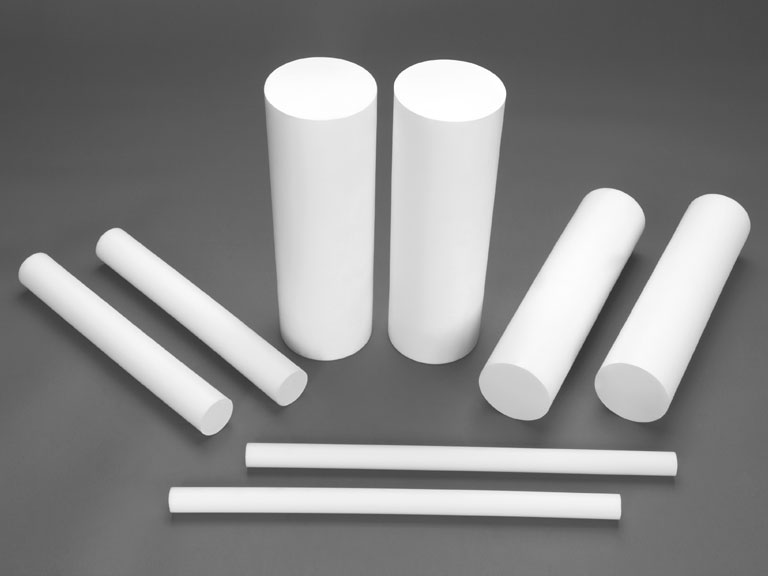Teflon rods are solid polytetrafluoroethylene cylinders. Polytetrafluoroethylene is an artificial fluoropolymer resin. This material is well-known for its low coefficient of friction, great non-stick qualities, and chemical resistance. Almost every Teflon rod supplier has made available in different grades and magnitudes. Manufacturers can fill various materials to improve them. The magnitude is dependent on their particular application. The standard of Teflon depends on its required qualities like temperature and chemical resistance. Manufacturers can use the fill material to enhance the qualities of rods, like wear resistance and durability. Rods are durable and valuable rods that manufacturers can utilize in various applications. This blog starts by discussing the benefits of filling different materials in these rods.
- Bronze-filled Teflon rods
Bronze-filled are filled Teflon rods that manufacturers have filled with Bronze powder. The Bronze filling offers these rods several benefits over unfilled rods. One of those several benefits is increased durability. Bronze-filled last for a longer time than unfilled rods. This is because Bronze fillings are key in reinforcing Teflon and ensuring they become more resistant to tear and wear. Bronze is a metal composite composed of tin and copper that resists wear and rusting. These qualities make Broze best for utilization in different applications encompassing reinforcing Teflon rods. The Bronze’s hardness is greater than Teflon. Thus, when manufacturers fill rods with Bronze filling, they increase their entire durability. Aside from that, Bronze is an excellent heat conductor, which manufacturers can use to transfer the heat from Teflon rods by filling it in them. It prevents the rods from overheating, which can harm them. By doing so, they help enhance the thermal conductivity. The thermal conductivity of Bronze-filled depends on the quantity of Bronze filled in Teflon rods. This is because the greater the Bronze is filled, the higher the Teflon rod’s thermal conductivity would be. Nevertheless, manufacturers must know that filling Teflon rods with a lot of Bronze filling can make these rods brittle and less sturdy.
Manufacturers use Bronze-filledin different applications where heat must be dissipated rapidly. For example, they are used to make seals, bearings, and other parts that are exposed to high levels of heat and friction. Manufacturers also use Bronze-filled in electrical insulation applications, playing a key role in averting damage to electrical parts.
- Graphite-filled Teflon rods
Graphite-filled are a kind of filled rods that their manufacturers have filled with graphite powder. The graphite filling helps these rods become more advantageous than unfilled rods. One of those advantages is its resistance to high temperatures. Graphite fillings equip rods with the ability to resist high temperatures due to the special qualities of graphite. Graphite is a type of carbon that features a hexagonal lattice structure. This structure offers graphite some unique qualities encompassing
- High thermal conductivity
Graphite is an excellent heat conductor, which tells us it can effectively and simply transfer heat away from itself. This quality is essential for high-temperature applications as it prevents the heat from failing and overheating.
- High melting point
Graphite features a high melting point, which tells us it melts after exposure to high temperatures. This helps make graphite best for applications where it will come in contact with high temperatures.
- Chemical inertness
Graphite features chemical inertness, which tells us it fails to react with other substances. This helps make it best for uses where it will come in contact with extreme atmospheres.
When manufacturers fill these rods with graphite powder, it is key in enhancing this substance’s thermal conductivity, chemical inertness, and melting point. This helps make graphite-filled rods best for applications where exposure to high temperatures is likely to occur.
- Carbon fiber-filled Teflon rods
Carbon fiber-filled Teflon rods feature great stiffness and strength. These rods are resistant to chemicals and corrosion. These rods resist rust due to the carbon fiber’s unique qualities. Carbon fiber is a lightweight and robust substance that resists corrosion. When manufacturers fill carbon fiber in rods, they enhance the corrosion resistance of these rods.
Here are some of the particular ways in which carbon fiber enhances the rust resistance
Inertness
Carbon fiber features chemical inertness, which means that it is unable to react with chemicals. This plays a crucial role in safeguarding from rusting.
- Barrier layer
The carbon fiber filling develops a barrier coating on the Teflon rod’s surface. This barrier coating is key in safeguarding the Teflon rod from corrosive chemicals.
- Strength
Carbon fiber is a highly sturdy substance. This helps enhance the Teflon rod’s entire strength, making it more rust-resistant.
Manufacturers use carbon fiber-filled rods in rust-resistant applications. For instance, they use them in marine applications, medical gadgets and chemical processing equipment.
Factors to consider while purchasing
This blog section discusses the factors manufacturers must consider while purchasing Teflon to meet their application needs.
- Size
Suppliers sell these rods in different diameters and lengths. Thus, manufacturers must select the magnitude that is appropriate for their applications.
- Grade
Suppliers sell various grades of rods. Manufacturers should choose the grade that meets their needs.
- Fill
Suppliers sell both filled and unfilled. Filled are sturdy and have better wear resistance, but they are also more costly. Unfilled rods are less costly,but they lack durability.
Application
Manufacturers must ask themselves the question: how will they use? This will let them decide the correct filling, grade, and size. For instance, if they are utilizing these rods for their medical application, they will need to select a biocompatible grade.
- Operating atmosphere
Manufacturers must ask themselves: what will be the operating atmosphere of the Teflon rods? Will they expose them to chemicals, high temperatures, or other extreme environments? This will help them decide the Teflon’s suitable grade.





